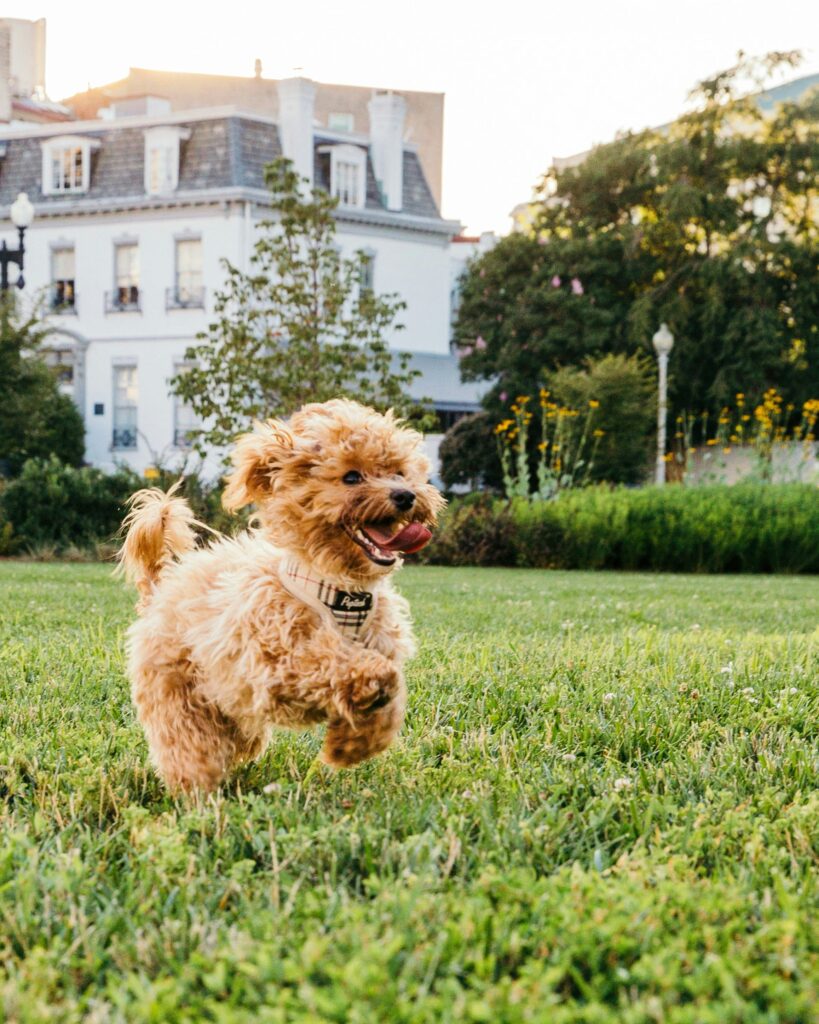Dogs communicate with us constantly, not just through barks and whines but through a rich tapestry of body language. Understanding these non-verbal cues can deepen your bond with your furry friend, improve training, and even prevent potential behavioral issues. In this blog, we’ll explore the fascinating world of canine body language, helping you become fluent in the silent language of dogs.

1. The Tail Tells a Tale
Wagging:
- High and fast: Excitement or agitation.
- Slow and low: Cautious or tentative approach.
- Stiff and straight: Aggression or dominance.
Tucked Between Legs: Your dog is feeling scared or submissive.
Neutral Position: Your dog is comfortable and happy.
2. The Eyes Have It
Direct Stare: Often perceived as confrontational by other dogs.
Soft, Blinking Eyes: Your dog feels safe and comfortable.
Wide, Whites of Eyes Showing (Whale Eye): Your dog is anxious or uncomfortable.
3. Ear Signals
Erect and Forward: Your dog is focused on something interesting.
Flat Against Head: Your dog feels threatened or is being submissive.
Relaxed and Natural: Your dog is at ease.

4. Mouth Movements
Yawning: Often a calming signal to defuse tension.
Panting (When Not Hot): Your dog may be anxious or over-stimulated.
Licking Lips: Your dog is trying to calm themselves or others.
5. Full-Body Language
Play Bow: Your dog is feeling playful and friendly.
Stiff, Upright Posture: Your dog is asserting themselves.
Rolling Over and Exposing Belly: Your dog feels submissive or wants belly rubs (context is key).
6. Vocalizations and Their Meanings
Barking: Can indicate excitement, alertness, fear, or a call for attention.
Growling: Your dog is uncomfortable or feels threatened.
Whining: Your dog wants something or is feeling stressed.
7. Context Matters
Environmental Factors: Setting and situation: The same body language can mean different things in different contexts. A tail wag at the park may differ from a tail wag at the vet.
Individual Differences: Personality and breed: Some dogs may have unique ways of expressing themselves based on their personality or breed characteristics.

Understanding your dog’s body language can transform your relationship, making communication smoother and more intuitive. By paying attention to their tails, eyes, ears, mouths, and overall posture, you can better meet their needs and respond to their emotions. Becoming fluent in canine body language not only enhances your bond but also ensures a happier, healthier life for your furry companion.
Whether you’re training a new puppy or deepening your connection with an old friend, mastering this silent language opens up a world of understanding and mutual respect between you and your dog. So, start observing, interpreting, and responding to your dog’s cues, and enjoy the rewards of a more harmonious relationship.
